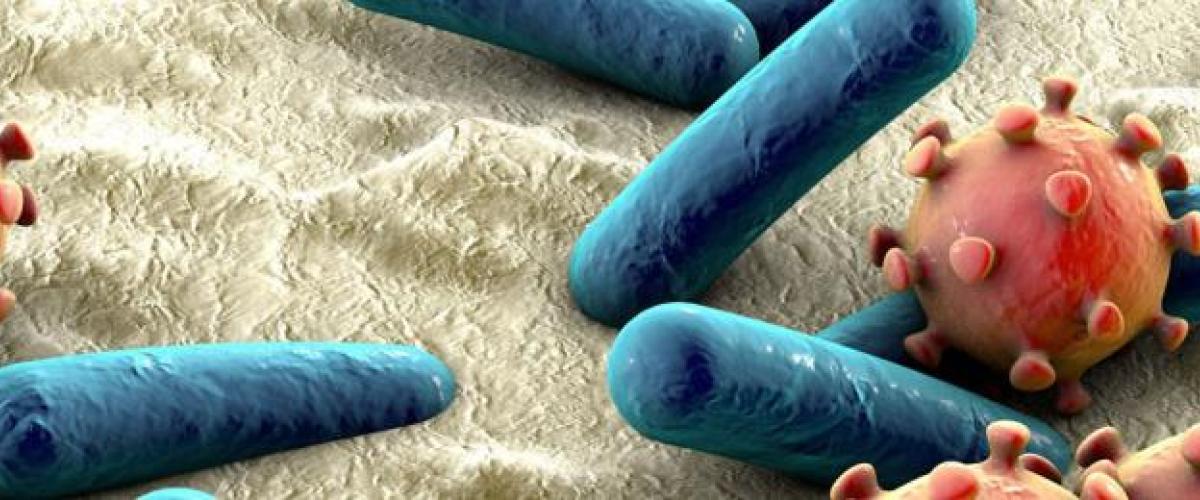
Cytomegalovirus (CMV) complicates 1% of all pregnancies and causes 8,000 severe infections in U.S. children annually, resulting in hepatitis, neutropenia, brain damage, seizures, and vision and hearing loss.
It is the leading nongenetic cause of infant hearing loss, accounting for 25% of all hearing loss, and causes more permanent disabilities in U.S. children then spina bifida or Down syndrome. Much like the rubella vaccine eliminated congenital rubella syndrome in this country, a vaccine that induces protection maternal immune responses is needed to protect against congenital CMV. Thus, a team of DHVI researchers, led by Dr. Sallie Permar, are working to identify the maternal immune responses required to protect against placental transmission of CMV in mother-infant cohort studies. Their work this year lead to a breakthrough in understanding how antibodies can halt placental transmission of a CMV-like virus in nonhuman primate models and investigated the immune responses elicited by from a CMV vaccine regimen showing 50% efficacy. Dr. Permar has received the prestigious Presidential Early Career Award for Scientists (PECASE) to further enhance this research for the next year.
Antibodies Halt Placental Transmission of CMV-Like Virus in Monkeys
“The presence of potent antibodies at the time of the mother’s primary infection seems to prevent viral transmission and severe disease in the developing fetus, and therefore should be a primary target of vaccines to prevent neonatal infection,” said co-senior author Sallie Permar, M.D., Ph.D., professor of pediatrics at Duke and member of the Duke Human Vaccine Institute. Permar and colleagues, including co-senior author Amitinder Kaur, M.D., of Tulane National Primate Research Center, published their findings in the July 6 issue of the journal JCI Insight. Using rhesus monkeys -- a recent advancement in modeling congenital CMV transmission in humans -- the researchers tested whether the offspring of mothers exposed for the first time to the rhesus form of CMV (RhCMV) could be protected from infection if the mothers first received RhCMV-specific antibodies - via Duke Health News and Media July 2017
Correlates of Protection of CMV Vaccine Study
Individuals who were vaccinated with CMV glycoprotein B plus the adjuvant MF59 were 50% less likely to acquire CMV in multiple phase II clinical trials. DHVI scientists led by Dr. Sallie Permar in collaboration with the NIH-funded Vaccine and Treatment Evaluation Unit and Dr. Robert Pass at the University of Alabama, Birmingham are working to define immune correlates of protection against CMV in these trials. This work is critically important, as this vaccine was the most successful tested clinically to date.
For this analysis, plasma of thirty-three unique glycoprotein B plus MF59 vaccinees (at peak immunogenicity) was tested for immunogen binding, neutralization, IgG subclass composition, epitope-specificity, phagocytic function, and ADCC activity. Then, these data from vaccinees were compared to that of previously CMV-infected subjects. Vaccination with glycoprotein B plus MF59 elicited high-magnitude gB-specific antibodies with a high degree of affinity maturation, comparable to the gB-specific antibody responses elicited by natural infection. However, in contrast to chronic infection, glycoprotein B plus MF59 elicited antibodies which did not neutralize the virus and only rare binding antibody responses against gB protein structural motifs described as the target of neutralizing antibodies, including AD-2 and Domain I. Interestingly, the majority of the vaccine-elicited immune response was directed against an AD-3 – an undesirable epitope that is non-neutralizing. Finally, vaccine-elicited antibodies were able to bind to trimeric gB expressed on the surface of gB-transfected and HCMV-infected cells, mediate phagocytosis of gB-coupled beads and whole HCMV virions, though facilitated very little ADCC activity.
Altogether, these results suggest that non-neutralizing functional antibody responses, such as phagocytosis, played a role in the observed 50% protection. These findings were presented at the 6th International Congenital CMV Conference in the Netherlands. An understanding of the mechanism of partial vaccine protection will inform the development of next-generation vaccines.